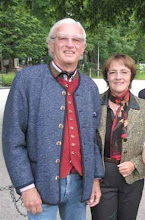The Mediator’s Handbook for Durable Peace, by Evan A. Hoffmann, the Canadian International Institute of Applied Negotiations, Ottawa, 2010.
Reviewed for Peacehawks by Jamie Arbuckle
At only 52 pages, this slim volume will scarcely displace the baton from anyone’s rucksack, but no one proceeding on a mission should leave home without it.
Evan Hoffman is the Executive Director of the Canadian International Institute of Applied Negotiations, a leader in their field of training on and researching into the techniques of mediation and negotiation, especially but not solely for peacekeepers of all brands and stripes. They have also been active in the non-violent management of conflicts and in promoting peace around the world. It detracts not at all from Evan’s own considerable accomplishments to say that he stands on the shoulders of a giant, which for us is a very good description of his father, Ben, whose work we have reviewed elsewhere in this blog.
Evan states his thesis early and clearly: “the balance of power between the parties at the time of mediation does not need to be equal, but a balanced agreement is necessary.” And there you have in a nutshell the major challenge of any mediation process: power is usually unevenly held, which is one of the more common causes of violent conflict. This asymmetry of power, usually accompanied by unequal access to resources, makes it difficult for the lesser to come to the table, while making it (seemingly) unnecessary for the greater to come at all. Only the prospect of a balanced agreement will attract the lesser to the table, and if the process does not iron out the differences, not least of power sharing, any semblance of peace will be an illusion quickly dispelled. It is the aim of Evan’s book to provide a model for durable peace.
Tuesday, September 28, 2010
Subscribe to:
Comments (Atom)

